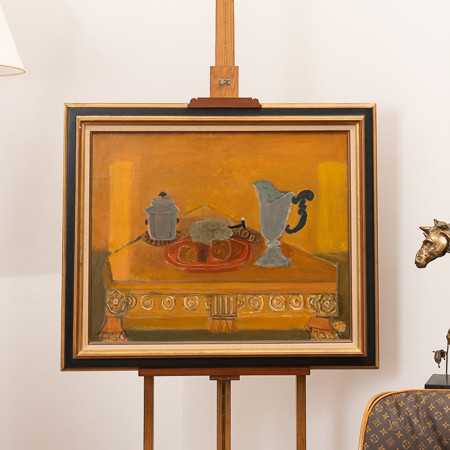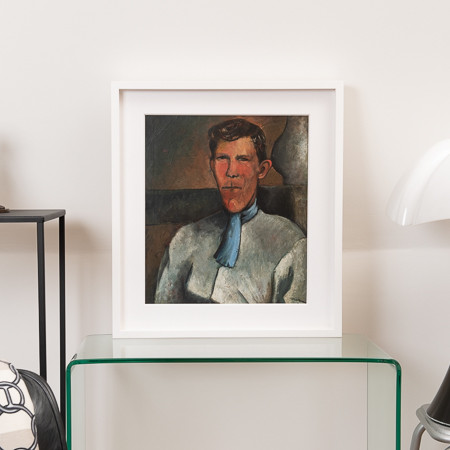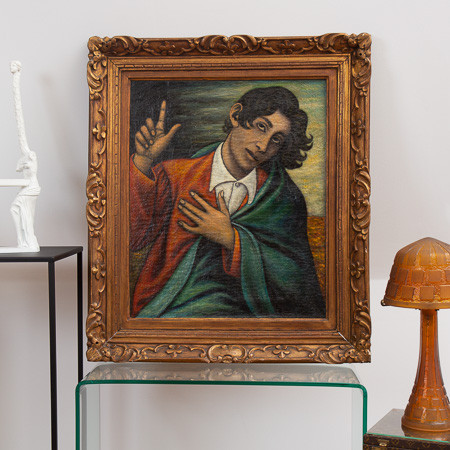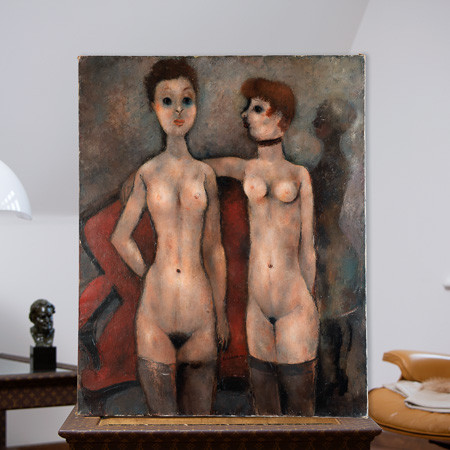About
Oil on canvas signed and dated lower left “Hayden 1920.”
Henri Hayden was born in Warsaw on December 24, 1883, into a family of merchants. In accordance with his father’s expectations, he enrolled at the Warsaw Polytechnic School, but in 1902 the opening of the School of Fine Arts disrupted his plans. For a time, he pursued both paths simultaneously, until, “aware of his true calling, he abandoned his engineering studies” (Selz, Hayden, 1962, p. 10).
In November 1907, his father sent him to Paris with the aim of obtaining “a medal at the Salon,” a guarantee of official recognition (Selz, p. 10). But Hayden quickly gravitated toward avant-garde artists. From 1915 onward, he associated with Jacques Lipchitz and Juan Gris, who introduced him to Léonce Rosenberg. Rosenberg “immediately recognized Hayden as one of his own” and signed an exclusive contract with him for his gallery L’Effort moderne (Selz, p. 10). The painter then fully integrated into “the heroic era of Cubism,” linked to Metzinger, Severini, Picasso, Matisse, and Max Jacob, whose silhouette Selz described as “charming and a little diabolical” (Selz, p. 10).
Hayden’s canvases reflect a personal approach to Cubism: while adhering “with an almost mathematical rigor to the principles of composition with overlapping planes and multiple perspectives,” he introduces “an unexpected grace and almost sensuality” (Selz, pp. 9–10). Max Jacob nicknamed him “the Renoir of Cubism” (Selz, p. 10). Waldemar George later confirmed that, for Hayden, “a Cubist work […] is not a probability calculation or a problem posed and solved,” but rather a “reconquest” of nature through a renewed pictorial syntax (L’Arche, 1958).
Among the major works of this period are the series of musicians and women, with figures appearing from 1918 onward. The musicians—guitarists, clarinetists, saxophonists—culminate in the famous jazz-band, miraculously saved.
La Femme au Guéridon holds an equally important place. The female figure is monumental, seated in a gigantic armchair. The body, barely legible, is broken down into volumes: “composed of juxtaposed planes showing the character’s struggle with figuration,” it conveys the constant tension between abstraction and representation. Color structures the surfaces, creating cohesive visual units. The head, styled in a masculine fashion and divided into two colored zones, “could represent any woman, a woman in general”; only “the wide lace collar discreetly betrays her.” This figure, “timeless,” frozen in a static posture, establishes a “notion of duration.” By isolating this woman from the outside world, Hayden “plastically revalorizes” her and gives her a universal character. The work thus manifests “all the beauty of Cubist stylization.”
Nevertheless, the history of this production remains fragmentary. In 1923, Rosenberg, furious to see Hayden drift away from Cubism, dispersed his stock at the Drouot auction. Some canvases sold for 45 to 50 francs, with the highest reaching only 75 francs (testimony of Hayden, in Troyes, 1994; Cabanes). This was compounded by the loss of nearly sixty canvases during the looting of his studio by the Germans in 1944, although some, like Les Trois Musiciens, were recovered.
Hayden later justified his break: “I abandoned Cubism because it seemed to me that I had exhausted all its resources and that I was condemned to tread water, to repeat myself” (Schurr, Le Guidargus de la peinture, 1996, p. 416). Éric Baudet notes that he “felt an imperative need to return to nature” (Baudet, 2009). Gérald Schurr praised the courage of “a major figure of Cubism” who managed to free himself “from a discipline whose resources he had exhausted” (La Gazette de l’Hôtel Drouot, 1975, p. 22).
From then on, Hayden pursued a personal path, where one finds “the poetry of his subtly arranged still lifes, of his composed landscapes, large expanses of color in highly refined relationships” (Schurr, 1975). André Salmon, who defended him from 1920, saw in him “the most speculative of Cubist painters and the least likely to renounce a work of pure humanity” (L’Art vivant, 1920, p. 154).
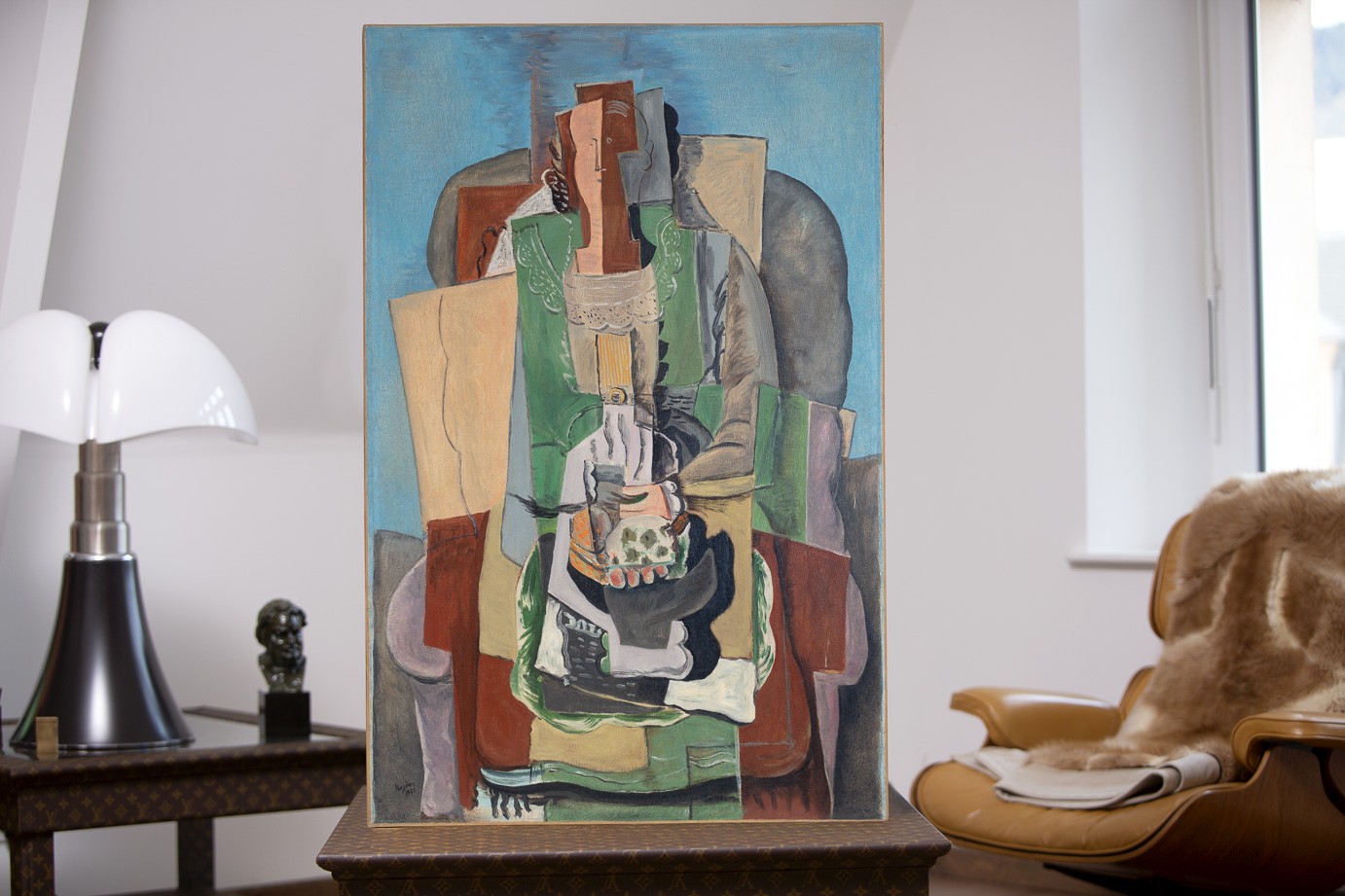
Characteristics
- Year: 1920
- Origin: France
- Artist: Henri Hayden
- Material or technique: Oil on canvas
- Sizes: 65 x 100 cm (Width x Height)
Conservation status
Excellent condition
Provenance
Previously part of the collection of Mr. Roger Gros, Paris, during the 1960s–1970s.
Bibliography
Selz, Jean. Hayden. Geneva: Éditions Pierre Cailler, 1962, illustration no. 25 (black and white), reproduced.
Exhibition
Hayden, soixante ans de peinture 1908–1968, Paris, Musée National d’Art Moderne, May 3 – June 2, 1968, illustration no. 43 (black and white), reproduced.
Henri Hayden, œuvres cubistes 1914–1921, exhibition at Galerie Zlotowski, 20 rue de Seine – 75006 Paris, April 22 to late June 2005, no. 15, reproduced.
Comparable reference on the art market
On June 1st, 2011, Sotheby's sold an oil on canvas by Henri Hayden entitled Fille assise au bouquet de fleurs, dated 1919 and part of the series of figures from his Cubist period, similar to the work we are offering for sale, Femme au Guéridon.


